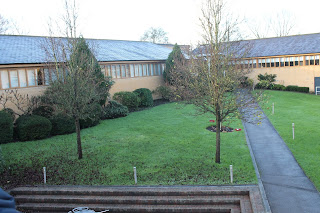For this assignment we were assigned with the
task of taking our own photos for our chosen theme. My chosen theme was the
effects of weather setting out to take a photo of bad weather and showing the
effects that it can cause. My inspiration was the newspapers such as The Daily
Mail that have covered bad weather patterns and reported the effects the
weather caused with the hope of recreating that through my image.
To begin this project I began researching
possible locations narrowing down to 3 possible places Southdown's field,
Ports down hill and South sea beach. My ultimate decision was the field next to
Southdown's field where it is peaceful and has a tree that can be a good object
to show the effects of weather. Once I decided on my location I next planned
out what equipment I needed to use I was originally going to use a Nikon camera
because of the different settings that I could use but finally used my phones
camera instead because of time constraints. The final stage of planning was
what kind of weather I wanted to have and what day it would be like this. My
ultimate decision was cloudy weather with possible rain this is because I feel
that this kind of weather is more fun and has better effects on the
environment. Before I took the official photos I researched similar weather
photos to understand things such as camera angles, focus, depth of field and
focus points.
My final location decision was the field near
southdowns field this is because the field has a great focus point thanks to
the tree. Also the surrounding areas can show the effects of weather really
well. The day that I did it I was very fortunate with the weather as it was
cloudy with spots of rain also it rained the night before so the effects of
weather could be shown in the environment. When taking the photo I made sure
that the focus lines was correct to how I planned it. I also needed to make
sure there were no people in front of the camera and that there was not any
blur. During my research of other peoples work I noticed that they had a big
focus on focus lines and the environment. A reason I picked bad weather was
because that is a popular focus for photographers and it attracts interest
especially storms because the damage it does to the environments. Also there is
a sense of calm and relaxation when looking a at a image with bad weather.
Another thing I picked up from other pieces of work when researching was that
they also used environments that were in distant areas like fields or the
countryside or the beaches not busy city environments. I tried to use as many
parts from works I researched as possible towards my final piece of work especially
the locations and weather. I wanted to use as much natural lighting as possible
as I feel natural and real effects of weather and lighting has more of a impact
on how you feel when looking at the image than a edited image. Also out of most
images I looked at when researching they also opted for natural lighting
without too much editing.
I think that the final image went really well
when taking it the weather was just how I planned it with the grey clouds and
the slight spots of rain. I think that my smartphones camera performed well
with barely any technical limitations although I believe a camera could have
still been a better choice because of the options I could have used to take the
photo with. But my phone was a good choice in terms of time management. The
feedback I got when I showed this image was very positive with the main praise
coming from the location the focus and I chosen on the tree. I did do a small
amount of editing with the image adjusting the grasses lighting making it a
little brighter as the camera had trouble capturing the dark grass. Thanks to
this assignment there is a lot that I have learned. The main thing I have learned
is time management and self-planning. Also having confidence in my self and my decision-making
was a big plus as in the past I always had problems making final decisions so
this unit has definitely helped with that. If I had to try something different
it would be the device I used to take my photos while the smartphones camera
still did a good job I feel a camera would have given the image the full
quality that it deserved. Overall I really enjoyed this unit and photography as
a whole I hope to do more projects like this in the future.






































